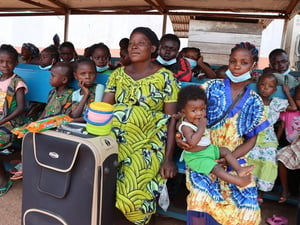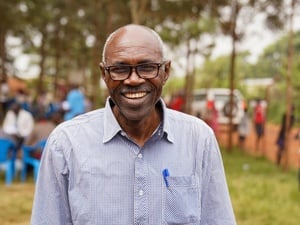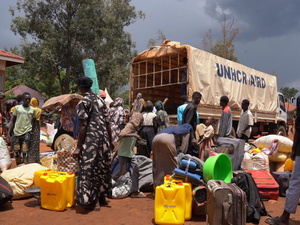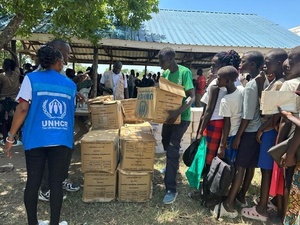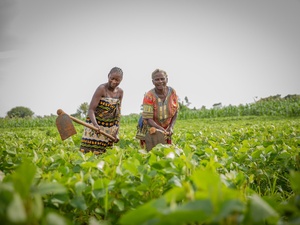Uganda: Congolese moved away from border regions
Uganda: Congolese moved away from border regions
A first group of 23 Congolese refugees fleeing recent fighting in the Democratic Republic of the Congo's (DRC's) Ituri district was moved away from Uganda's western border regions on Thursday. An estimated 1,000 out of some 11,000 Congolese refugees who had sought asylum in Uganda's Bundibugyo district in the last few weeks have expressed willingness to move away from the border. The relocation is organised jointly by UNHCR and the Ugandan government. The Congolese refugees are being transferred to Kyakka II camp, the designated location for newly arriving refugees. Most of the refugees are currently scattered across several fishing villages on the southern shores of Lake Albert.
During yesterday's operation, UNHCR sent in three trucks to pick up an expected 250 refugees from Karugutu, a trading centre, some 10-15 km from Lake Albert on the road leading to Fort Portal, south-west Uganda. The refugees had indicated to local authorities that they were willing to be moved away from Karugutu. However, only 23 refugees showed up for the actual move and were transferred to Kyakka II, a refugee camp which already hosts nearly 7,000 mainly Congolese refugees. There are also nearly 2,000 Congolese refugees in Karugutu who have settled there in the last few weeks outside the camp.
Yesterday, a joint team with officials from the government, the Red Cross and UNHCR travelled to Kyakka, south-west of Kampala, to help establish a reception facility for the relocating refugees. The team is setting up basic health and sanitation facilities and assisting in the demarcation of plots for refugee families.
We have also stockpiled, in Kyakka, some basic supplies including blankets, plastic sheeting to cover refugee dwellings, jerry cans, kitchen sets and some clothes to cater for the immediate needs of the new arrivals. The World Food Programme has also put in place food rations for 3,000 people.
The Uganda Red Cross Society is now looking at the water resources in the camp and may bring into use some of the boreholes that are capped for emergencies, particularly if larger numbers of refugees agree to be moved inland.
This morning, the joint relocation team is moving to villages on the southern shores of Lake Albert where it expects to transfer those Congolese refugees who are willing to move. The team will visit Rwebisengo where authorities had registered some 500 refugees by mid-May. Many of the refugees fleeing fighting in Ituri, north-eastern DRC, had come in with large herds of cattle. However, refugees with livestock will not be moved during this phase of the operation.
The team will tomorrow go to Ntoroko, a major landing port on the southern part of the lake. Nearly half of the estimated 11,000 refugees who have fled to Bundibugyo district are in Ntoroko. By mid-May, local authorities here had set aside land on which refugees could put up temporary dwellings at a site nearly one km from the bustling fish trading village. The current relocation exercise is expected to be completed by the weekend, particularly if no large numbers of refugees agree to move.


